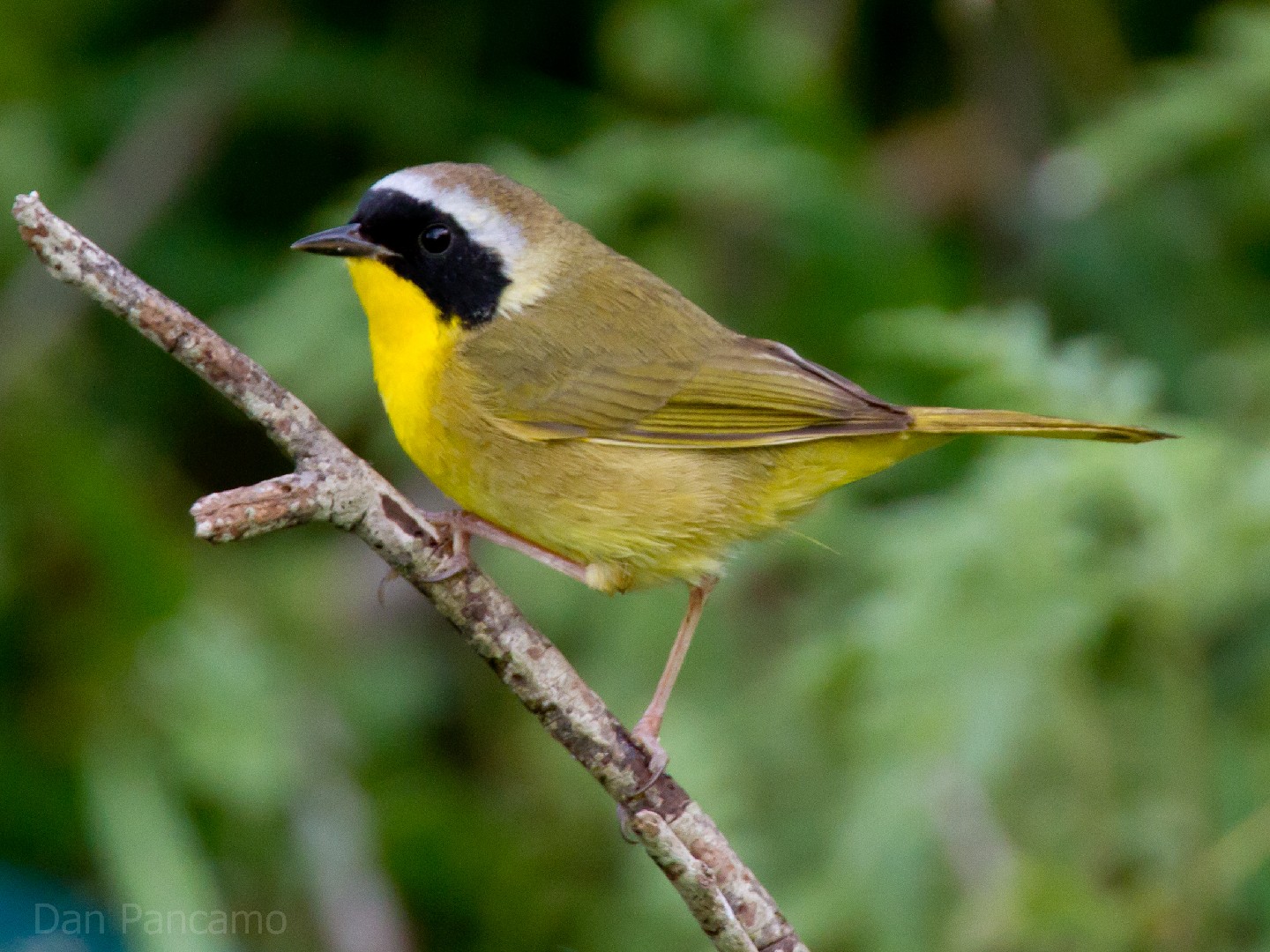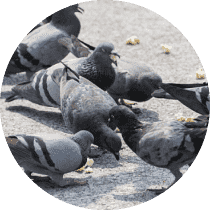Common Yellowthroat
A species of Yellowthroats Scientific name : Geothlypis trichas Genus : Yellowthroats
Common Yellowthroat, A species of Yellowthroats
Botanical name: Geothlypis trichas
Genus: Yellowthroats
 Photo By Dan Pancamo , used under CC-BY-SA-2.0 /Cropped and compressed from original
Photo By Dan Pancamo , used under CC-BY-SA-2.0 /Cropped and compressed from original Description
The common Yellowthroat is an inquisitive bird that spends most of its time in marshes and wetlands. The male performs a unique flight song as it rises into the air on its fluttering wings. Sadly, because they are innately curious and tend to pop out into the open whenever they hear a noise, many adult common Yellowthroats fall prey to carnivorous birds like Loggerhead shrikes, as well as fish—one common Yellowthroat was found inside the stomach of a largemouth bass!
Size
13 cm (5 in)
Life Expectancy
10 years
Nest Placement
Shrub
Clutch Size
1 - 6 eggs
Incubation Period
1 - 2 broods
Number of Broods
12 days
Nestling Period
12 days
Feeding Habits
Common Yellowthroat forage in low vegetation, consuming mostly insects such as bugs, flies, beetles, ants, termites, bees, and grasshoppers. They pick prey from surfaces or may catch it mid-air. They also ingest grit, likely aiding digestion or providing minerals.
Habitat
Common Yellowthroat predominantly occupies areas with dense, tangled vegetation such as swamps, marshes, and wet thickets. They are adaptable and can be found at the edges of various landscapes, including wetlands, prairies, and pine forests across North America. In winter, they migrate to similar dense habitats throughout the southern U.S., Mexico, Central America, and the Caribbean.
Nest Behavior
The female common Yellowthroat builds the nest in 4-5 days, with swifter construction later in the season. She begins with a platform, adding finer materials in layers. Egg-laying and parental care are predominantly by the female, with some food provisioning by the male.
Nest Characteristics
Common Yellowthroat's nest is typically situated on or near the ground within low plants or marshy higher grounds for flood safety. The female constructs a concealed, bulky cup-shaped nest, with a platform of leaves and grass, measuring approximately 3.5 inches wide and 3 inches deep externally, with an inner dimension of 2.2 inches wide by 1.8 inches deep. Some nests may feature a roof.
Dite type
Insectivorous
Migration Overview
Routes of migration vary based on the season and location of common yellowthroats. During fall migration, from August to October, common yellowthroats in Canada, Western, Eastern, and Central U.S., and regions outside of the United States all have unique migration routes. When migrating in the fall months, all adults and immature individuals tend to arrive at their migration destinations around the same time. Migration differences in timing and routes are also seen during the spring months from early February to late May in these same groups across the United States, Canada, and other areas. However, males generally arrive at their destination site before the females during the spring migration months. During both fall and spring migration, many birds take time to rest during a stopover period. Some individuals stay at their stopover destinations for several weeks or months while others spend only a few days resting before they continue on in their migration patterns to their final destination. One place of study on common yellowthroat migration that is unique and worth noting is Appledore Island, Maine. Common yellowthroats here typically migrate to this island during the spring months displaying distinct patterns of movement and stopover ecology. Analysis of the common yellowthroat spring migration from April to June was observed by researchers from the Department of Biology at Canisius College in Buffalo, New York, to determine patterns of migration and time spent resting on the island before continuing on their journey. Birds returning for more than the second time arrive earlier than birds migrating to the island for their first time. Every year, males tend to arrive on the island an average of five days earlier than females weighing more than the females upon arrival. One possible explanation for the early arrival of males to this island is the ability of males to set up territories before the females arrive. This could give them better access to resources and a higher likelihood of finding a female. However, both sexes spend about a week on the island before leaving. Migration of common yellowthroats in Florida has also been extensively studied. In Florida, the common yellowthroat can be found more often in the southern peninsular region rather than the northern panhandle region closer to the mainland of the United States. Peak migration times of the birds in this region are during the last week of September through the second week of October. Not as much is known about spring migration in Florida, but the patterns appear similar to that of the autumn migration. Future studies are needed to understand specific migration patterns of common yellowthroats in other parts of the United States. 
General Info
Feeding Habits
Bird food type
Bird Feeder Type

Ground

Platform
Sounds
Call
Recording location: United States
Call
Recording location: United States
Song
Recording location: United States
Behavior
Common Yellowthroat's generally display a pronounced territorial instinct, especially during the breeding season. Males arrive early in spring to claim their territory and can engage in aggressive behavior when a female is present, indicated by their distinctive black mask which plays a role in territorial disputes. These birds show courtship through close following and wing-flutter displays from females. While common Yellowthroats are predominantly monogamous, infidelity does occur. After hatching, the usual vigorous territorial defense wanes as parents focus on feeding their young. Though solitary on wintering grounds, they may occasionally join mixed-species foraging groups. Predators of common Yellowthroats range from small mammals to birds of prey.
Species Status
Not globally threatened.
Scientific Classification
Phylum
Chordates Class
Birds Order
Perching birds Family
New world warblers Genus
Yellowthroats Species
Common Yellowthroat